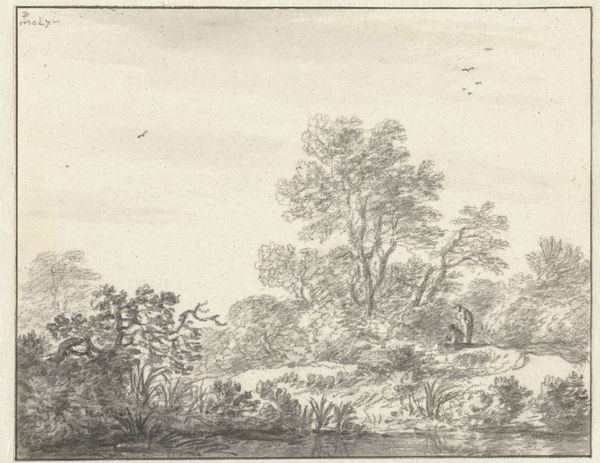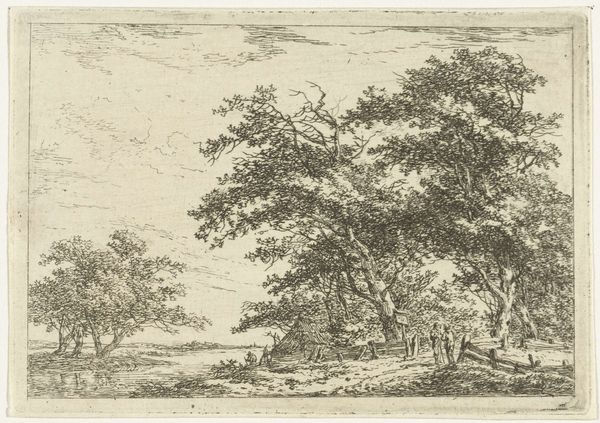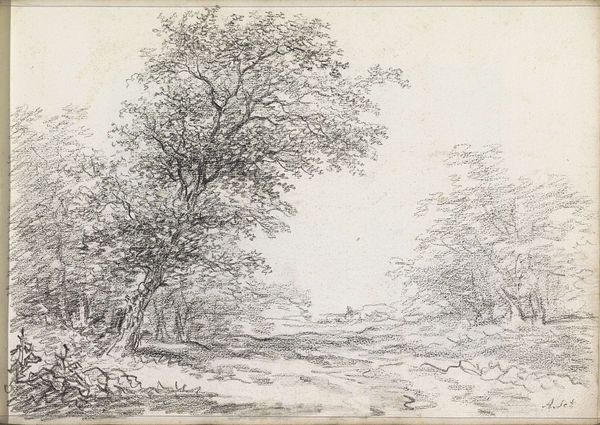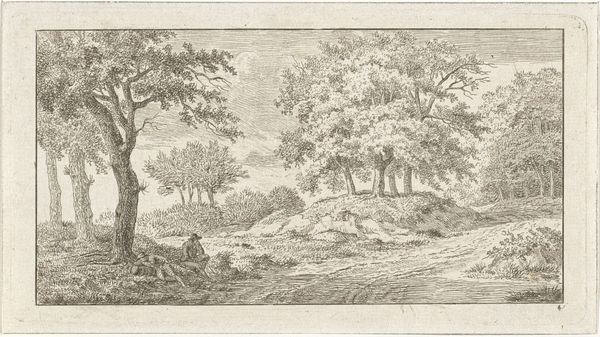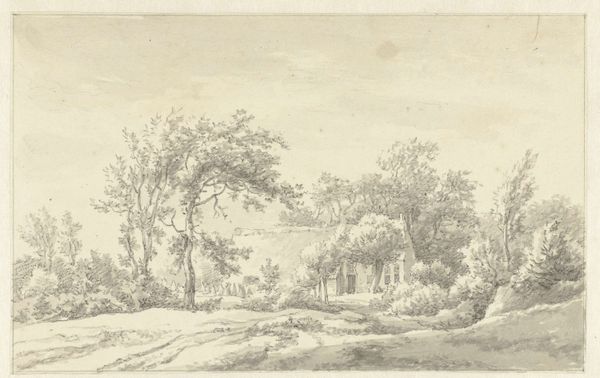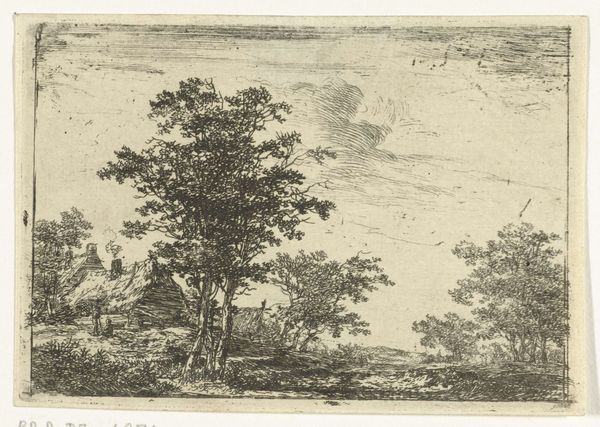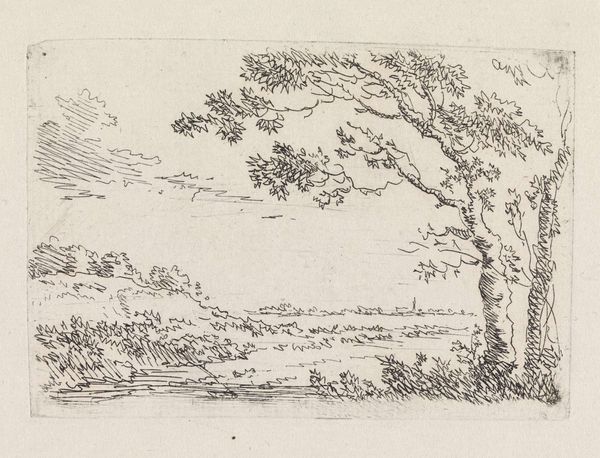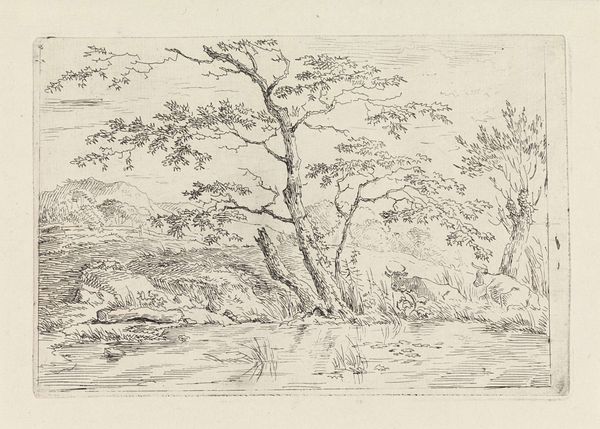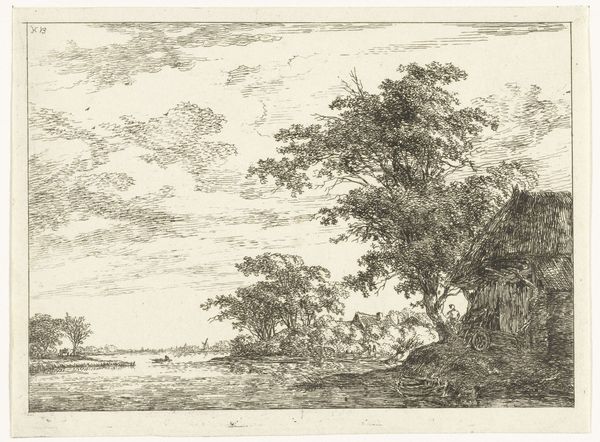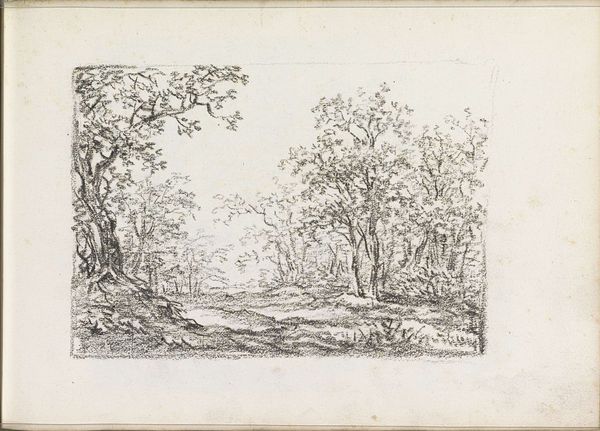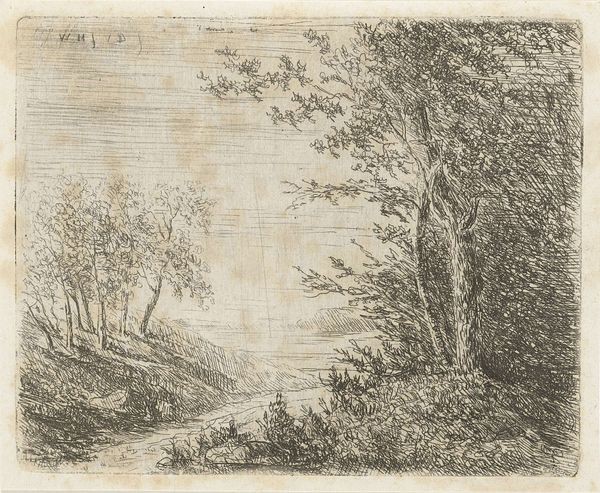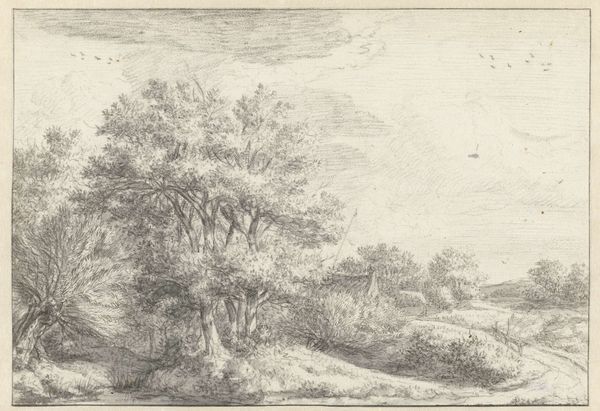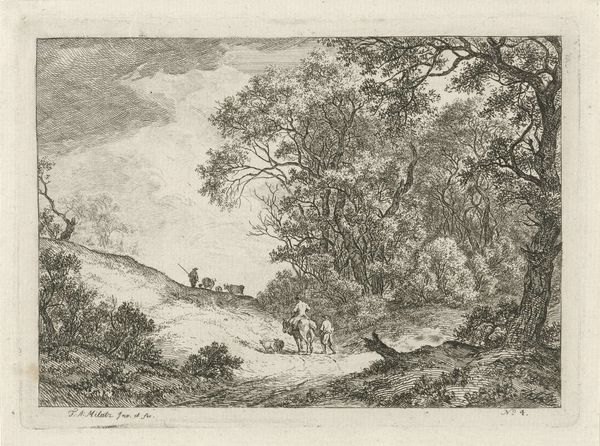
Dimensions: height 93 mm, width 174 mm
Copyright: Rijks Museum: Open Domain
This is a landscape by Johannes Pieter van Wisselingh, made using etching, a printmaking technique that dates back to the Middle Ages. The image begins with a metal plate, usually copper or zinc. The artist covers the plate with a waxy, acid-resistant substance, then scratches an image into this coating with a needle, exposing the bare metal. The plate is then immersed in acid, which bites into the exposed lines, creating grooves. Ink is applied to the plate, filling only the etched lines. Finally, the surface is wiped clean and the image is transferred to paper under high pressure. Look closely, and you can see how van Wisselingh uses the etched lines to create depth and texture, suggesting the play of light on the leaves and the rough texture of the dirt road. The final print bears the mark of both the artist's hand and the industrial processes of reproduction. It is a wonderful reminder that even in the age of mass production, the handmade retains its unique value.
Comments
No comments
Be the first to comment and join the conversation on the ultimate creative platform.
